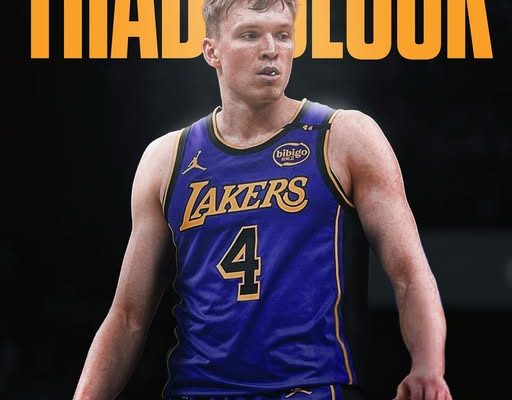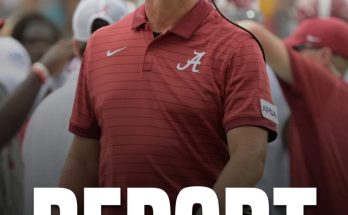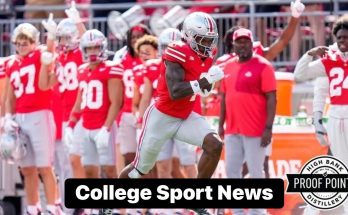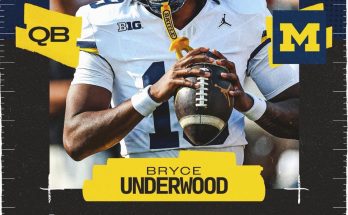In the ever-evolving landscape of the NBA, trade rumors often serve as the undercurrent that propels front-office decisions, fan discussions, and media narratives forward. One such storyline has recently begun to gain serious traction within the league and especially among Los Angeles Lakers fans: a reported “consolidation trade” involving rookie Dalton Knecht and veteran forward Maxi Kleber. The report, originally floated by well-connected Lakers insider Anthony Irwin, has sparked intense speculation about what such a trade would mean for the Lakers’ short- and long-term future. The term “consolidation trade” itself signals a strategic shift in Los Angeles’ front office thinking, a nuanced pivot from collecting pieces to molding a focused, streamlined roster capable of contending in a top-heavy Western Conference.
To fully grasp the implications of this rumored trade, one must start with an understanding of what a consolidation trade is. In NBA terms, a consolidation trade typically refers to a deal where a team gives up multiple assets—often young prospects, expiring contracts, or role players—in exchange for one or two players who provide more immediate value or fit a specific team need more cleanly. It’s the classic quantity-for-quality equation. The Lakers, who have historically danced between developing youth and chasing titles with veteran star power, are seemingly leaning once again toward immediate returns—hardly surprising given the ever-present urgency surrounding LeBron James’ final years and Anthony Davis’ current prime.
Dalton Knecht’s name appearing in these rumors raises eyebrows for several reasons. Selected with the 17th overall pick in the 2024 NBA Draft, Knecht has already impressed during Summer League and early workouts. A dynamic wing scorer out of Tennessee, Knecht brings a rare blend of athleticism, shot-making ability, and poise, attributes that many believe could flourish under the right tutelage in the league. He averaged over 20 points per game in his final college season and was known for his high motor and confident jumper—traits that translate well to the NBA, especially in today’s perimeter-oriented game. Knecht also plays with a chip on his shoulder, having worked his way from junior college to the SEC and ultimately to the NBA first round. That journey alone made him a fan favorite before he even donned a Lakers jersey in a regular season game.
However, the Lakers’ inclusion of Knecht in trade talks suggests something more strategic than impulsive. Los Angeles likely views him as a valuable asset—one whose ceiling is enticing to other teams but whose current production timeline may not align with their urgent championship aspirations. Teams that are rebuilding or reshaping their core could see Knecht as a centerpiece in a larger deal, especially if they’re trading away a high-level role player or starter on a reasonable contract. In this context, Knecht becomes a kind of trade currency, and while emotionally difficult for fans to accept, his involvement in a potential deal is reflective of the transactional nature of professional sports at the highest level.
Enter Maxi Kleber, the other key name in this reported consolidation effort. A 6’10” forward known primarily for his defense, shooting, and basketball IQ, Kleber has spent his entire NBA career with the Dallas Mavericks. The German big man is often overlooked in highlight reels but is highly regarded by coaches and teammates for his ability to space the floor, guard multiple positions, and make smart, unselfish plays. Kleber is not the kind of name that makes fans rush to buy jerseys or headlines splash across front pages, but he is precisely the type of veteran role player championship teams lean on during playoff runs. His career three-point percentage hovers around 35%, and while he’s battled injuries in recent seasons, when healthy, he provides a level of positional versatility the Lakers have lacked off their bench.
The Lakers’ interest in Kleber speaks volumes about their roster priorities. Over the past few seasons, Los Angeles has struggled to find a reliable stretch-four or backup five who can guard the perimeter and contribute offensively. Davis has often been at his best when paired with a frontcourt partner who can both defend and hit outside shots—players like Marc Gasol or even Dwight Howard to some extent filled that role at different points. Kleber could be that partner. His presence would allow Davis to remain flexible, switching between power forward and center without overburdening him with rim protection duties or floor-spacing responsibilities.
But the intrigue of this potential trade goes deeper. The idea of a consolidation trade implies that the Lakers might be ready to give up not just Knecht but perhaps other pieces as well—players like Jarred Vanderbilt, Jalen Hood-Schifino, or even Rui Hachimura have been mentioned in speculative packages. The goal, it seems, is to turn several “good” players into fewer “very good” or “perfect fit” players. The Lakers are reportedly trying to address redundancy on the roster while optimizing for postseason performance. In that sense, the trade isn’t just about Kleber and Knecht—it’s about repositioning the entire roster to support LeBron and Davis in a way that’s sustainable across an 82-game season and into the playoffs.
Another layer to this situation is the Lakers’ internal power dynamics and front office philosophy. Rob Pelinka, the Lakers’ general manager and vice president of basketball operations, has been under scrutiny since the Russell Westbrook trade saga and has since aimed to reestablish credibility through more measured decisions. This proposed trade could be seen as another attempt to thread the needle between competing timelines: building for now while keeping the door open for the future. Including Knecht in a deal shows a willingness to sacrifice long-term upside for present-day reliability—an approach that could either be lauded as decisive or criticized as short-sighted depending on how the trade pans out.
It also cannot be ignored that LeBron James’ influence looms large over any Lakers roster moves. Entering what could be his final season in purple and gold, LeBron continues to seek a final championship run, and his preferences are rarely overlooked. James is known to favor veteran-laden rosters with intelligent role players who understand spacing, timing, and defensive rotations. Kleber fits that mold. If LeBron believes that adding someone like Kleber—at the expense of young players who are still learning the NBA ropes—improves their championship odds, it’s likely that the front office will oblige. With Bronny James now on the team and LeBron officially signed through the 2026 season, each year feels more like a must-win situation than ever before.
Financial considerations also play a role. Kleber’s contract is considered team-friendly by most standards—\$11 million annually through 2026—which makes him an attractive option for a cap-strapped team like the Lakers. Knecht, still on a rookie deal, has limited salary-matching power on his own. Therefore, other contracts would likely need to be included to make the numbers work, and that opens the door to additional speculation about who might be moved. The Lakers are operating in a financial environment where every dollar matters due to the luxury tax implications and the newly instituted second tax apron rules, which limit team flexibility.
From a basketball perspective, the trade offers a potential net positive if viewed through the lens of needs-based roster building. The Lakers have more wings and combo guards than they can effectively develop or play significant minutes. Knecht, while promising, may find himself buried behind Austin Reaves, D’Angelo Russell, Spencer Dinwiddie, Bronny James, and Max Christie. Trading him now, while his value is high and before any inconsistency sets in during the regular season, might be a forward-thinking move. In return, Kleber offers floor spacing and positional versatility that are much harder to find, especially among players who are playoff-tested and familiar with big-stage pressure.
Of course, there are inherent risks in any such trade. For one, Kleber has been injury-prone. He missed large chunks of the 2022–2023 and 2023–2024 seasons due to hamstring and knee issues. The Lakers have been burned by availability issues in the past, most notably with players like Kendrick Nunn and even Anthony Davis himself. Adding another player with a potentially spotty health record introduces a degree of uncertainty. There’s also the risk that Knecht becomes the type of player who flourishes in a low-pressure, high-opportunity environment—say, on a rebuilding team like the Wizards or Hornets—leaving Lakers fans to rue what might have been.
Moreover, this trade—if it indeed happens—might not be the final piece. It could be a precursor to a larger strategy involving multiple trades or even a three-team deal. The Lakers have been linked to several other trade candidates, including names like DeMar DeRozan (before he signed with the Kings), Jerami Grant, and even Zach LaVine. The consolidation concept allows the team to position itself to make a bigger splash down the road if the opportunity arises. That’s what makes this rumor so interesting: it could be either the main course or simply the appetizer.
Lakers fans are known for their passion and their high expectations, and reactions to this rumor have been predictably mixed. Some see the logic in trying to shore up the roster with players who are ready to contribute immediately. Others worry that once again, the Lakers are trading away potential for temporary gains—an approach that has had mixed results in recent years. While the 2020 championship serves as a validation of the all-in model, subsequent seasons have been marred by inconsistent play, injuries, and roster imbalance.
If nothing else, the rumored trade between the Lakers and Mavericks (or a third team yet to be revealed) involving Dalton Knecht and Maxi Kleber underscores the delicate balancing act that front offices must perform. Win now, but don’t mortgage too much of the future. Develop talent, but don’t let development get in the way of contending. Please the stars, but don’t lose sight of building a cohesive team identity. These are the daily tensions that executives like Pelinka must navigate, often in real-time and under intense public scrutiny.
Anthony Irwin’s reporting has historically been accurate, particularly when it comes to Lakers internal rumblings. If he says a consolidation trade is on the table, it likely is. That doesn’t guarantee it will happen, or even that the pieces being discussed are final. The NBA is nothing if not fluid, and trade talks can collapse or accelerate within hours based on new information, injuries, or other teams jumping into the mix. What this rumor does do, however, is provide insight into how the Lakers are viewing their current roster: not as a finished product, but as a collection of assets still in need of refinement.
As the NBA offseason continues and teams begin to shape their identities for the upcoming season, all eyes will be on the Lakers—not just because of LeBron James, but because they are once again a bellwether franchise whose moves often set the tone for the rest of the league. Whether the reported trade involving Knecht and Kleber materializes or not, it’s clear the Lakers are not content to stand pat. And in a league where standing still often means falling behind, that mindset might be exactly what they need.



